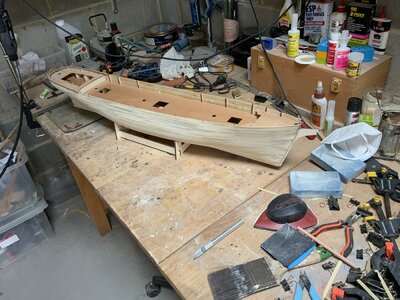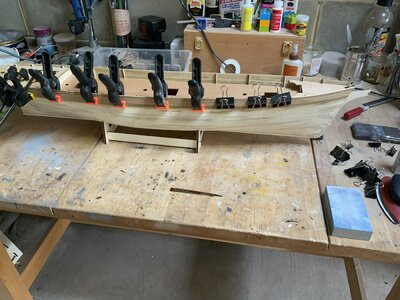You are using an out of date browser. It may not display this or other websites correctly.
You should upgrade or use an alternative browser.
You should upgrade or use an alternative browser.
HM Cutter Lady Nelson scale 1:64-Victory (Amati) Models [COMPLETED BUILD]
Thanks Heinrich , in the future the Duyfken , still on my mind , both my wife and myself just recovered ( we are not vaccinated for health reasons ) from Covid a couple of weeks ago , took Ivermectin 12mg for a couple of days and Q-10, and other Immune boosters and are as good as gold ! So your own immunity is paramountIt is great to see you start this project Robert - I will be in the front row to cheer you on. I do hope there is a Duyfken-build also scheduled in the future though!
Good morning Robert. Good to hear your and your wife have come through Covid well. A new project that is awesome- look forward to it. Cheers GrantHad to wait a couple of months for my next project , the Lady Nelson , she is tiny in comparison to the ‘Cutty Sark ‘ I recently finished .
just dry fit the bulkheads and false deck just to see what it looks like , so I will post more pictures with the build progress
View attachment 301258
View attachment 301259
Pleased to hear your recovery news and that you have a new ship on the workbench. Looking forward to more scenic photos!
Thanks Paul, It is a little one ( Lady Nelson ) to fill in time , I am running out of space here to display big onesPleased to hear your recovery news and that you have a new ship on the workbench. Looking forward to more scenic photos!
Thanks Grant , we experienced the Covid not such as a dead thread , just extremely tired as your own immune system is working overtime to fight the virus , and no appetite for about 10 days , with the alternative medications we got over it pretty quickly , both of us feeling fine now .Good morning Robert. Good to hear your and your wife have come through Covid well. A new project that is awesome- look forward to it. Cheers Grant
Get well soon, Rob!!
I should slow down , my dear wife is away enjoying herself with girlfriends up country , good on her , as she just said build when I am away! It is a very nice start for a new builder in our hobby and most enjoyable , but sometimes you need a challenge , I will build this one for one of my grandsons .
so far my results of today , I made myself a lovely prosciutto herbed crusted filet Mignon , creamy garlic mashed potatoes and roasted vegetables for dinner washed down with a glass of Chateau Le Cazals 2018 , yes cooking is my other hobby and I am the Chef at home another secret I love to share .
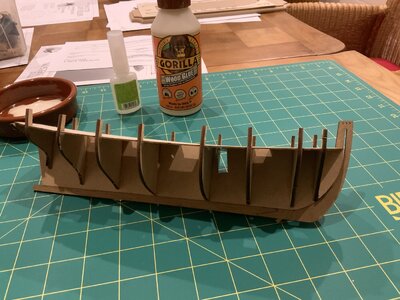
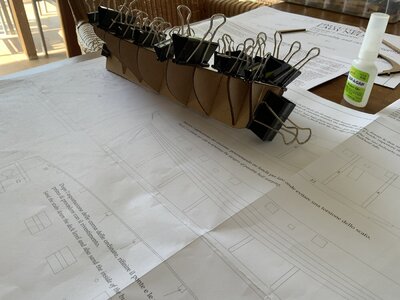
so far my results of today , I made myself a lovely prosciutto herbed crusted filet Mignon , creamy garlic mashed potatoes and roasted vegetables for dinner washed down with a glass of Chateau Le Cazals 2018 , yes cooking is my other hobby and I am the Chef at home another secret I love to share .


Soaked the Bulwark strips in hot water for an hour or so , and used an Amati electric plank bender to get the correct bow shape , they work pretty good , before installing them I beveled the bulkheads where necessary , I didn’t glue the bulkheads extension as they will have to removed at a later stage , using CA glue just on the edges of the deck where they meet the bulkheads ,you might notice I filled the void spaces at the bow with Balsa wood and sanded to have a nice surface for planking not on the instructions though.
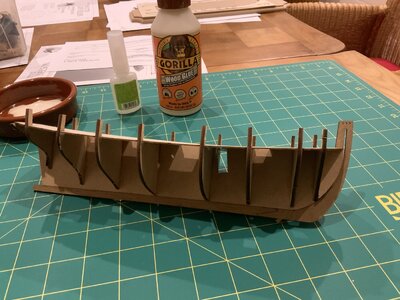
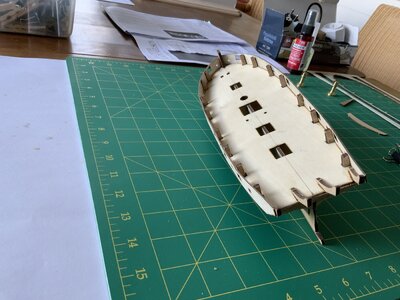
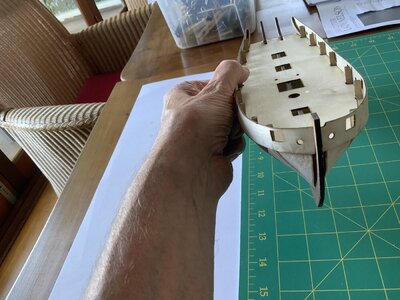



Good morning Robert. Off to a good start. Filler blocks on the bow an excellent idea. Cheers Grant
For your hull shape, balsa blocks would be most effective between frames 2 and 3 since there are very complex curves in this section of the hull. The planks make two turns as you go from stem to stern, bending outward from frame 2 and bending inward as they pass over frame 3. As you go from keel to gunwale, there is another "S" curve in that same planking. Making a hull shape from frames that are this far apart makes you rely on the consistency of how each plank curves as you bend it over the frames. Here is where having consistently grained and good lumber (nice hardwood, not bamboo or knotty softwood) comes into play. Without support from balsa blocks, wood strips that do not bend at consistent curves do not always line up edge to edge as you plank. The balsa blocks ensure that they do, because the strips are forced into place by being glued to the filler block. Looking at the overall hull shape, using filler blocks prevents areas of sharp curvature from forming vertical lines or sharp folds that indicate where frames are underneath, and flat spots between these folds, sort of like seeing your ribs sticking out of your chest after being stranded naked and afraid on a desert island with almost no food or water. You can see all the frame lines in the hull where curves are sharpest or where plank curvature changes direction. You need wood filler to hide all these imperfections, and that takes more time. If the folds over the frames are severe, no amount of filler will perfectly hide them.
Soaked the Bulwark strips in hot water for an hour or so , and used an Amati electric plank bender to get the correct bow shape , they work pretty good , before installing them I beveled the bulkheads where necessary , I didn’t glue the bulkheads extension as they will have to removed at a later stage , using CA glue just on the edges of the deck where they meet the bulkheads ,you might notice I filled the void spaces at the bow with Balsa wood and sanded to have a nice surface for planking not on the instructions though
The Workshop !
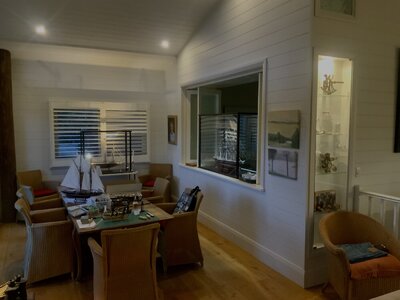
Good morning Robert- very attractive workshop....Clean and tidy building will be the name of the game for you for sure...Cheers
That's WAY too tidy to be a working man's shop! Where are the tools, the research books, the saws, the lathe, the sewing machine, the racks full of hardwood, and the stained, paint spattered, beat up old workbench with the vice and covered with half assembled models?
Dining Room table Grant ! As long as I keep it tidy my Dear doesn’t mindGood morning Robert- very attractive workshop....Clean and tidy building will be the name of the game for you for sure...Cheers


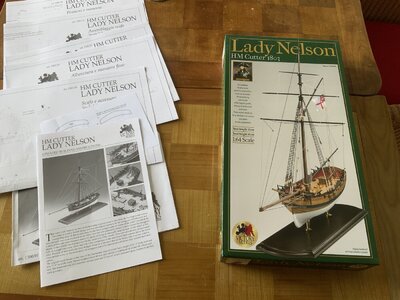
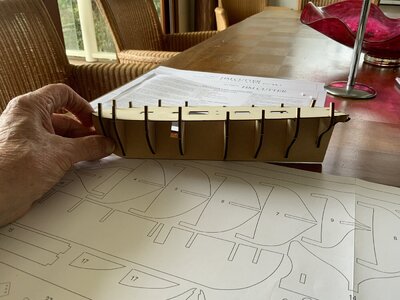

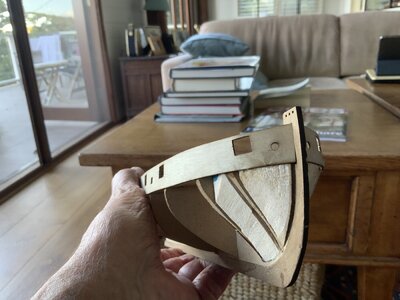

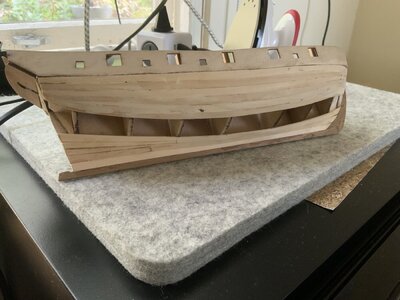

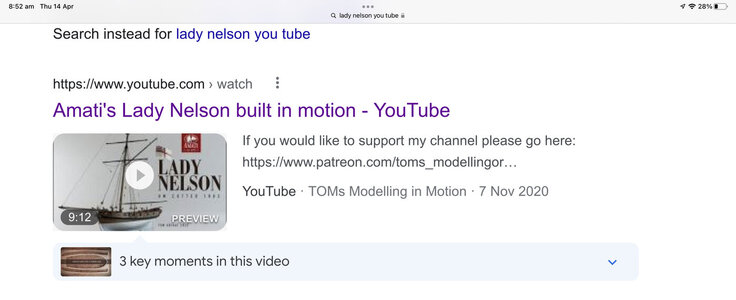
 ??
??